1811 Clayton & Hyde Shilling Trade Token
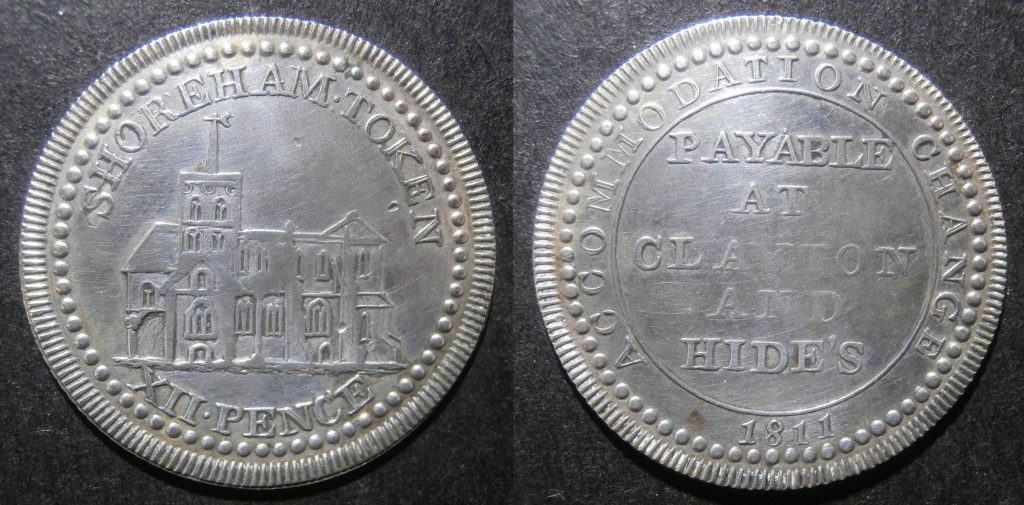
Nelson writes;
A period of coin shortage when the British Royal Mint almost ceased production making small change scarce prompted merchants in 1811 to produce tokens ‘for the accommodation (convenience) of the public.” These were issued by merchants with the agreement that they would be redeemed in goods to an equivalent value at the merchants’ own outlets. The transaction was therefore one of barter, with the tokens playing a role of convenience, allowing the seller to receive his goods at a rate and time convenient to himself and the merchant in order to tie the holder of the token coin to his shop.
We know little of Hide (or Hyde), probably Edward Hide who married Esther Rice in 1810, although it is a fairly well known Shoreham family name, mainly of mariners. The Claytons were mostly businesspeople who moved in the same circles as the well to do Tate, Hawkins and Rice families – all of whom had made their money in seafaring and property dealings.
Thomas Clayton married into the Hawkins family of Chantry House in East Street and owned a ‘Roman Cement and Plaster of Paris Manufactury’ on what is now Coronation Green, next door to his home, Stone House, that still stands today. By 1828 this was moved to larger, riverside premises at Ropetackle. He also owned at least one ship with which to export his cement from the quayside that was doubtless manufactured using the high grade chalk from the nearby quarry at Upper Beeding.
Records show that Clayton seems to have run his cement business and a shop in the High Street near John Street in partnership with various others from time to time and one of the earliest of them appears to have been Hide. It is this business that Clayton and Hide are likely to have issued tokens for and this one is a very rare example of their twelve old pence token currently for sale at £275!
There are two Shoreham related examples of these tokens illustrated below. The first one is a one shilling (twelve old pence) brass token issued by the Swiss Gardens. According to the 1851 Swiss Gardens guide book, the entrance fee at the time was one shilling but this was made returnable to the public on Sundays in the form of refreshments.
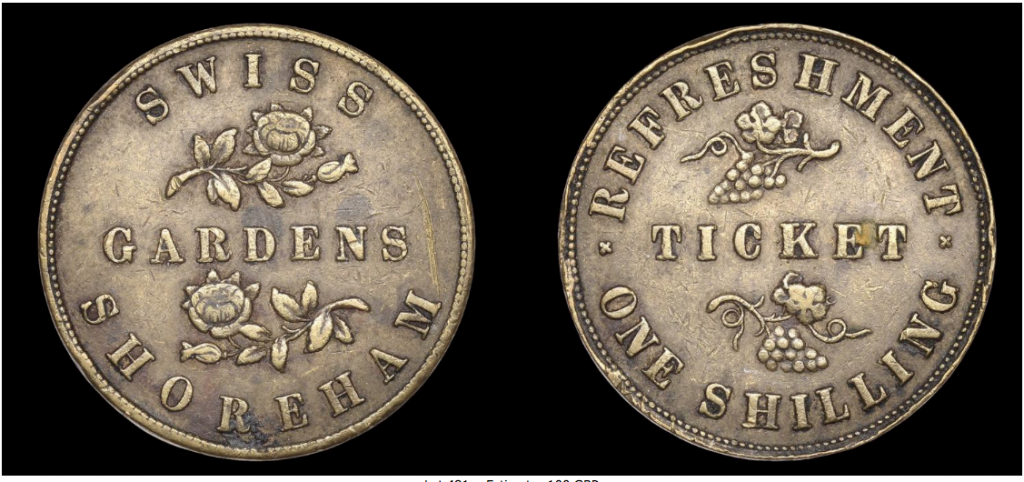
The second is a 6d (six old pence) token issued by Aylings Stores of 54-56 High Street, located on the west corner of John Street. This business opened in the mid 1860’s and was finally closed in 1916.
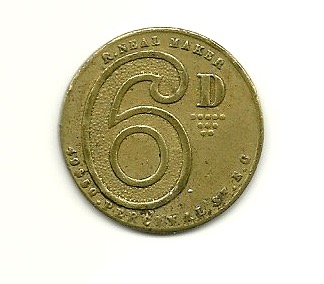
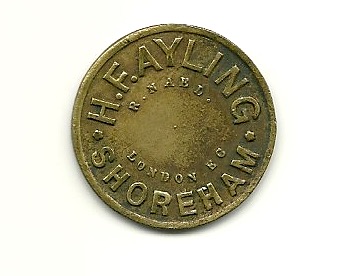
The one below with the “pense” spelling, has been sold today at auction, 2nd June 2021. Against a £300 to £400 pre-sale estimate, it realised £500. That adds up to a staggering £673 when you add on the buyer’s premium, internet bidding commission charge and vat. This particular example was issued by token salesman Henry Morgan – perhaps this makes it more desirable and hence the higher price. A more common Shoreham Shilling in similar condition would normally cost you somewhere between £200 and £300.
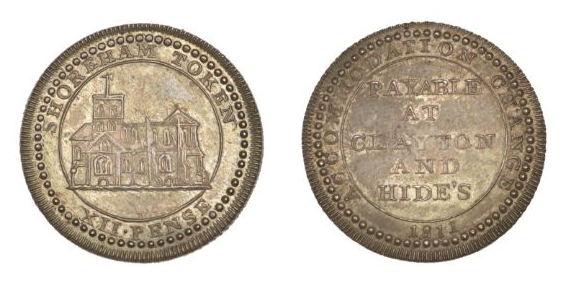
The Shoreham Farthing
Lofty adds:
Following on from the civil war, and the beheading of Charles I in 1649, a commonwealth was established with Oliver Cromwell as Lord Protector. However, the new parliament failed to produce small denomination coinage, and as a result of this numerous merchants and towns / villages started to issue their own. This illegal “money of necessity” became the small change of the time, and was extremely useful to the people who issued and used it.
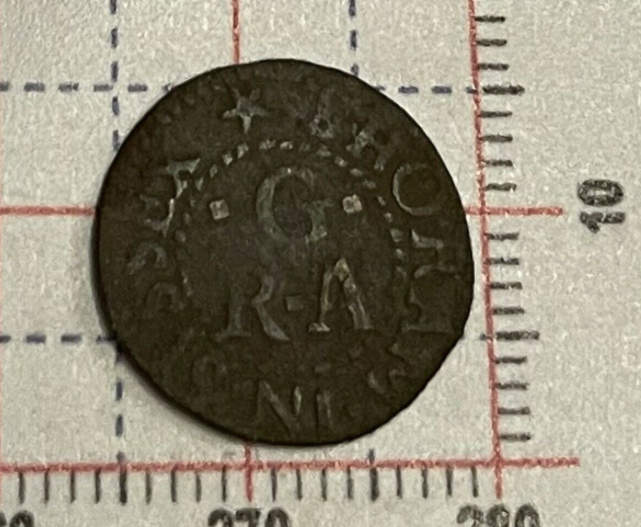
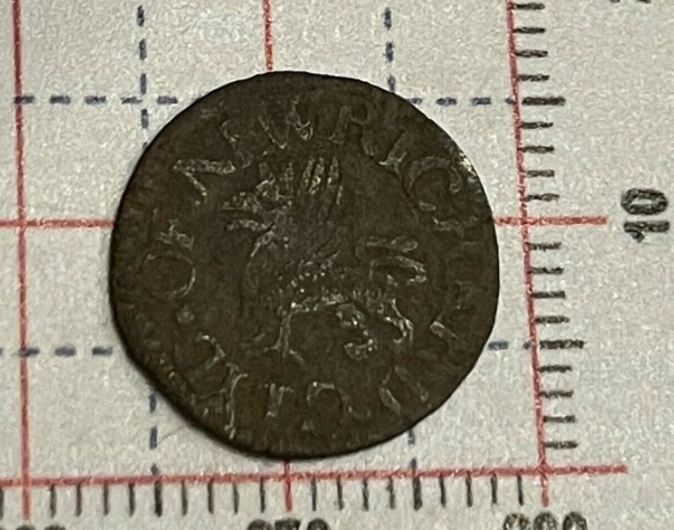
Obverse:- RICHARD.GLYD.OF.NEW. around a griffin standing and looking to the left.
Reverse:- SHORAM.IN.SVSSEX around an inner circle with G. over R.A within it.
The token is 16mm diameter.
The money was issued in the form of tradesman’s tokens. The tokens were hammer-struck in copper or brass, and came in denominations of farthings, halfpennies, half-farthings and (rarely) pennies. The inscriptions on the tokens typically included the name of the issuer, their trade, and the name of the town or village where they lived – additional features could include the value of the token and a coat of arms or other device. They continued to be used after the end of the commonwealth and up until 1672 when Charles II introduced the first Royal copper halfpenny and farthing coins.
In Sussex, the majority of these tokens were issued by mercers, grocers, innkeepers and chandlers. In the larger towns, numerous tokens were issued, for example Chichester (37), Horsham (11) and Petworth (11). However, here in Shoreham, only one of these tokens, a farthing, was ever issued, and today they are very rare.
The Shoreham Farthing was introduced by Richard Glyd, a merchant / tradesman in New Shoreham.

